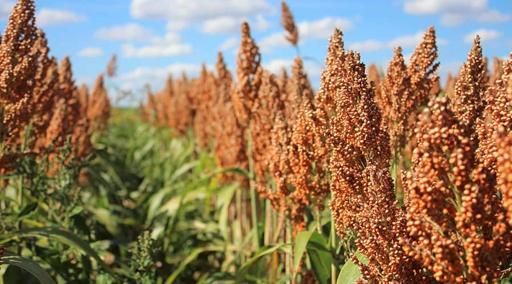Sorghum
Sorghum bicolor
Also known as: Andropogon sorghum

Growing Information
Growth Habit: Annual
Climate Requirements: Thrives in hot and dry climates with minimal rainfall.
Soil Requirements: Prefers well-drained sandy or loamy soil with pH 5.5–7.5.
Water Requirements: Low water requirements; highly drought-tolerant.
Planting Instructions: Direct sow seeds 2–3 cm deep in rows spaced 25 cm apart.
Harvesting Information: Harvested when grains are hard and dry, typically 100–120 days after planting.
Characteristics & Benefits
Plant Characteristics: Sorghum is a drought-resistant cereal grain with a tall, grass-like growth habit and compact seed heads.
Nutrient Content: High in protein, fiber, and antioxidants.
Health Benefits: Gluten-free alternative grain, supports digestion, and provides essential minerals.
Yield Information: Average yield is around 3–4 tons per hectare.
Uses & Distribution
Culinary Uses: Used for flour, porridge, syrup, and fermented beverages.
Industrial Uses: Used in ethanol production, fodder, and biofuel.
Native Range: Northeastern Africa.
Current Distribution: Grown in Africa, Asia, and the United States.
Pest & Disease Management
Common Pests: Sorghum midge, shoot fly, and aphids.
Diseases: Anthracnose, grain mold, and downy mildew.
IPM Practices: Resistant varieties, crop rotation, and natural predators.
Market Value: $190.80
Research & References
Studies and Articles: Research on drought-resistant sorghum varieties.
Bibliography: Sorghum Improvement Program, 2023.
Comments
Add CommentNo comments yet. Be the first to comment!